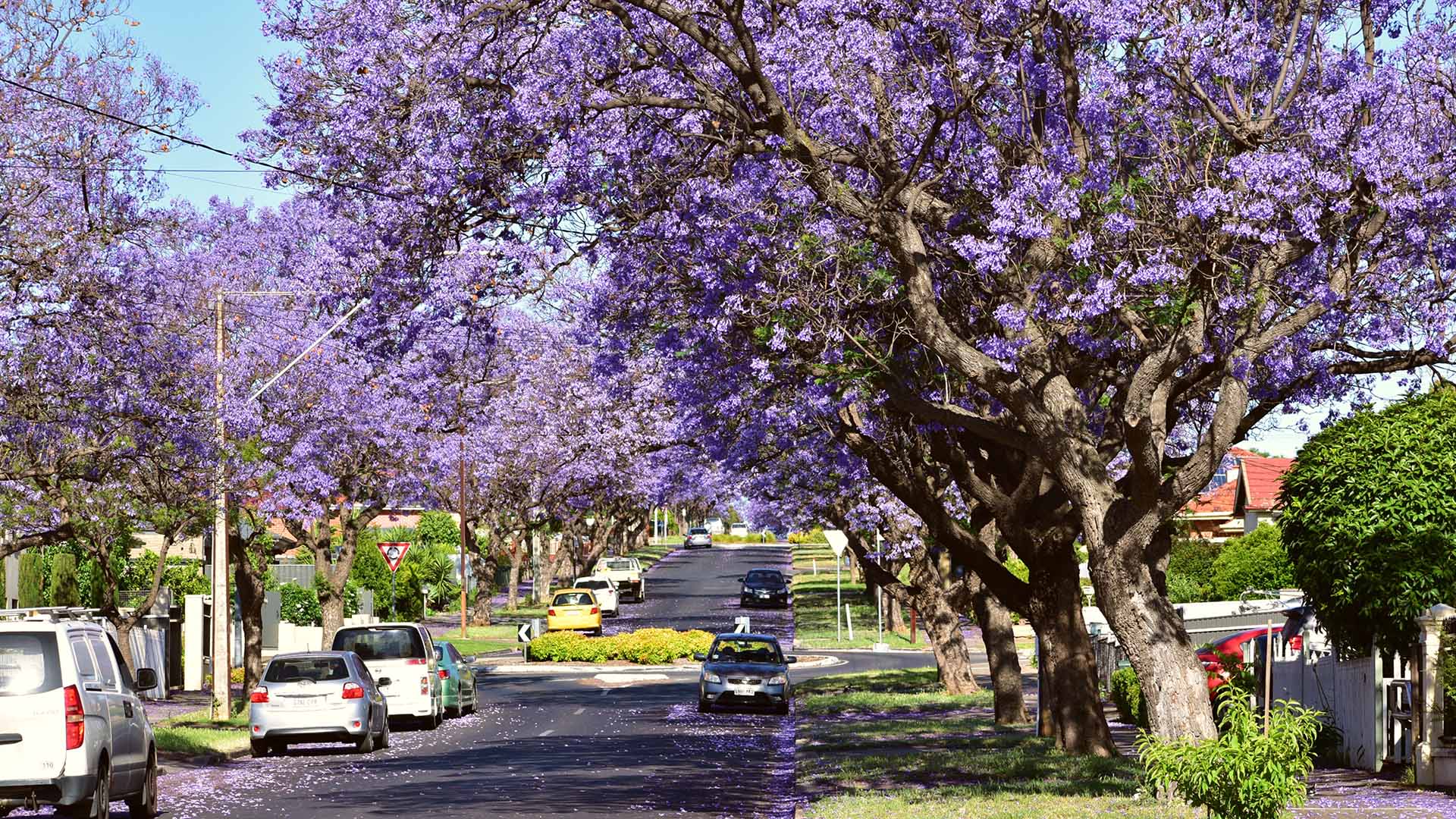Sitting in the back of a taxi as we weaved through the back streets of Sydney, I commented on the beauty of the jacaranda trees in full bloom along both sides of the road. A canopy of purple above and a carpet of fallen flowers on the pavement.
We might have been very close to the heart of Sydney, but this felt like an oasis of nature.
The taxi driver agreed.
“It’s good to have these trees here,” he said, “It makes a big difference to the residents. It makes them feel happier.”
I’ve always loved the purple of the jacaranda flowers. Their arrival in November heralding the onset of summer, Christmas around the corner, and holidays.
Colour has an impact on our psyche. Perhaps you’ve noticed you’re drawn to some colours more than others. Colour psychology has shown that lighter shades of purple contribute to a sense of relaxation and calm, just as the colour blue does.
Is there any evidence to support this?
Some, but there isn’t much conclusive research.
Perhaps it’s a placebo effect. Or maybe it’s just personal preference.
Do certain colours impact your mood?
Which is your favourite colour, and why?
The need for colour in our urban environments
My family have lived in a small coastal city for forty years. As cities go, we feel very blessed to have easy access to the beach, a beautiful river and bushland, meaning our city life is very different from those living elsewhere in higher-density suburbs with fewer opportunities for interaction with trees or parks.
It’s estimated that 56% of the world’s population (4.4 billion people) now live in cities, with the expectation this will increase to 68% by 2050.
Here in Australia, we are one of the most urbanised countries in the world with over 86% of the population living in cities in 2021.
Our saving grace is the size of the country and relatively low population, meaning our population density is amongst the lowest in the world. More space, more room for trees and gardens.
You’re probably thinking, “So what?”
The ‘so what’ is that having greater access to nature in all its various forms affects our mood, wellbeing, and overall health.
Best urban design features green and/or blue space, which we can expose ourselves to individually as well.
True Blue.
Beyond flowers, a pale blue sky or the reflected blue of the ocean are the most common examples of blue in nature, and we have certain animals like the Blue Whale, birds like the male Blue Wren, peacocks, butterflies and other insects.
Spending time in a blue space, whether at a beach or lake, or taking in the purplish-blue hues of a mountain range, is believed to be as good for us as spending time in a green space.
Do you have a preference, or are you, like me, happy to spend time in either or both?
Blue space and mental wellbeing
Research from Glasgow Caledonian University found that spending time in a blue space lowers the risk of stress, anxiety, obesity, cardiovascular disease and premature death. This was a retrospective study of 132,788 people carried out over a ten-year period.
The conclusion was that living near a blue space modified the risk of mental health conditions derived from low socioeconomic conditions by 6% for those considered at highest risk and 4% in the medium group.
Who knew that spending time watching the waves roll in at the coast, or listening to the cascade of water at a waterfall could be so good for us?
In another study conducted by the University of Sussex, one million responses from 20,000 people asked randomly when they were happiest revealed that the majority stated they were happiest in blue spaces.
According to the UK-based Mental Health Foundation, 65% of people find being near water improves their well-being.
Lifestyle Medicine Practitioners embrace six pillars for greater health and wellbeing. These include healthy nutrition, regular physical activity, good quality uninterrupted sleep, stress management, avoiding risky behaviour such as smoking and excess alcohol consumption and social connection.
But maybe there’s another pillar that needs to be added.
The pillar of time in nature.
A growing cohort of LMP professionals worldwide now provide blue, green and general nature prescriptions.
Because the scientific evidence shows it works.
In the States, there is even a subspeciality within the American College of Lifestyle Medicine called Nature as Medicine or #NAM
Utilising the power of blue space for your own wellbeing.
You can try many activities to experience the benefits for yourself, depending on your geographical location and accessibility to natural environments. You don’t have to wait to go on holiday or book a cruise.
Did you know that 40% of the world’s total population lives within 100 km of the sea?
Ask yourself what blue space is nearby.
What would be a fun thing to do on the weekend?
How can you enjoy more time in a blue space, regularly?
Do you spend time listening to natural sounds like water or the ocean?
Do you find staying in a blue space helps you to feel more tranquil?
You could:
- Visit a local park that has a water feature.
- Pack a picnic to enjoy beside a river or lake.
- Get to the beach for a surf, dip, walk or sit and watch the waves.
- Spend time on your back cloud watching against the backdrop of a blue sky.
- Go snorkelling or dive.
- Go kite surfing, sailing or kayaking.
Do you find spending time in a blue space helps to reduce your stress and improves your mood?
I’d love to hear your thoughts.


